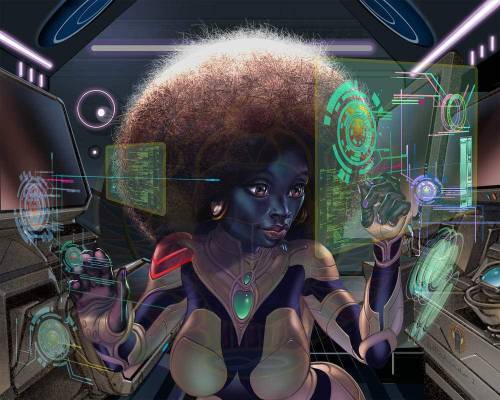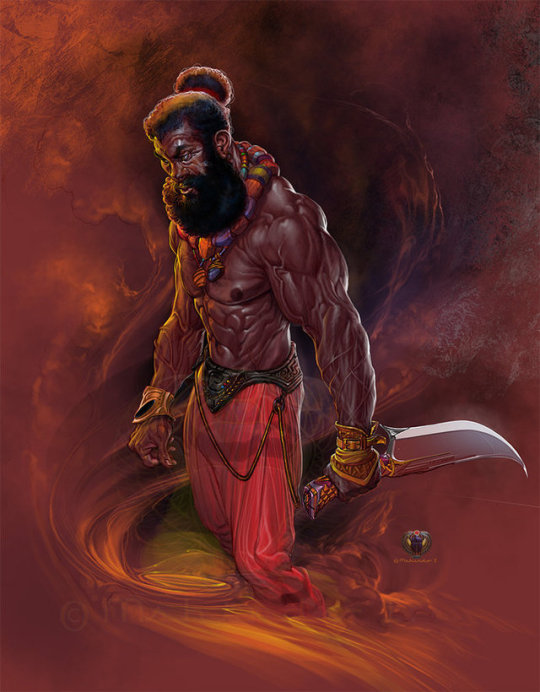#Mshindo Kuumba
Text
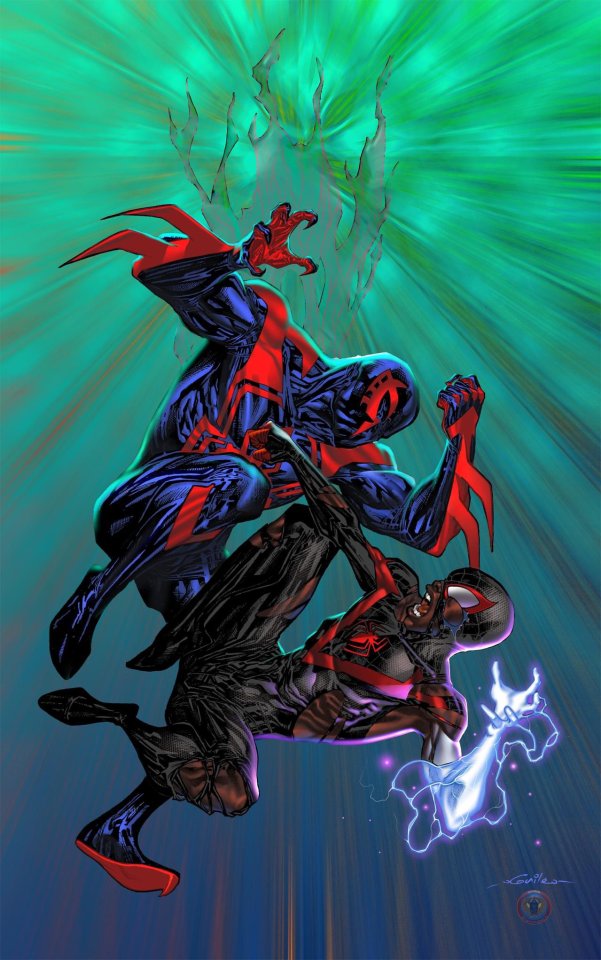
O’Hara vs Morales
Art by Mshindo Kuumba
#Comics#Marvel Comics#Spider-Man#Spider-Man 2099#Miles Morales#Spider-Man Miles Morales#Mshindo Kuumba#Art#Marvel#2099
183 notes
·
View notes
Text
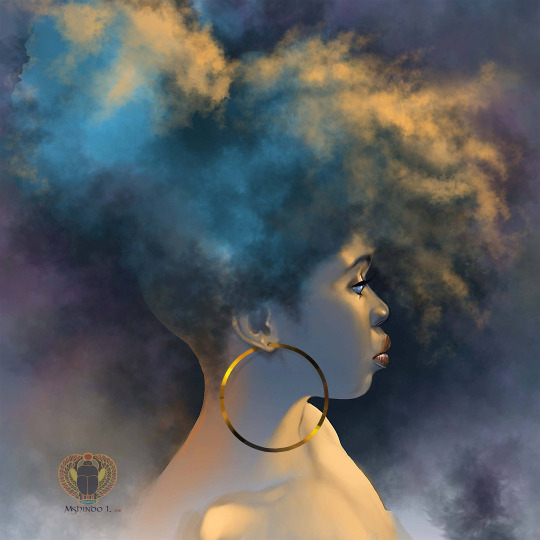
Art by Mshindo Kuumba
23 notes
·
View notes
Text

"The Mystic Khepesh" by Mshindo Kuumba
23 notes
·
View notes
Text
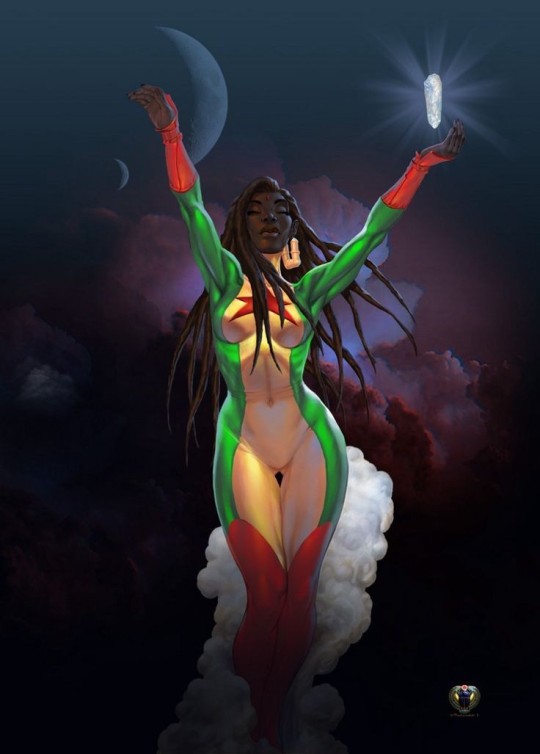
RAYA
Art by MSHINDO I. KUUMBA
24 notes
·
View notes
Text
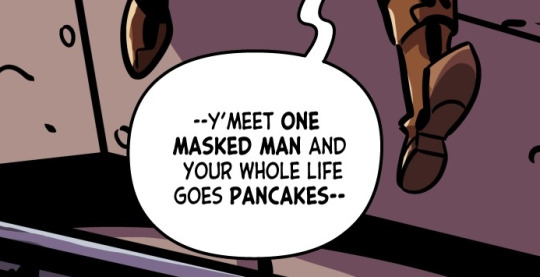
So @artbyblastweave made a post recently talking about how deeply, almost monstrously self-referential the superhero genre is, and even has to be by design, in response to an ask about elements ubiquitous to the genre and/or stories, and whether these elements are requirements. They gave me a shout-out saying I could provide a more informed perspective on how the pulp heroes hang around in superhero universes “as objects of tribute and parody”. That got me thinking, thinking about how many works do employ this kind of thing, who use that idea of “there used to be weird not-quite-superheroes up until the 30s, that eventually gave way to the real thing” for worldbuilding.
Thinking about how, everywhere you look in superheroes and superhero universes, you see remnants big and small of that pulp fiction bedrock they were raised from and above, mixed with so many hundreds other things that shouldn’t even be called “pulp fiction” but still gets to share the name because there’s nothing else to call them, because they have just enough in common, because most of it is all in the past, and the past is an amorphous shadow hanging over our heads made of everything that isn’t What-Is-Now and What-Will-Be-Then, growing larger and more stuffed with every tick, as What-Was-Before encompasses every second so far.
You see it in comics, you see it in movies and cartoons adapting the comics. You see it in the Justice Society and Black Adam, you see it in the Black Panther mythos, you see it in Batman and Superman and Namor and Watchmen and Invincible and Black Hammer and every Sherlock Holmes reboot and every James Bond reboot and everywhere if you know where to look, if you know some of the names and inspirations behind the wires and strings that put these tapestries together. Maybe it isn’t there, maybe it is. Maybe it never was, maybe it never stopped being.
In that post about The Question, I argued about Archetypes and Ectypes and how they relate to one way to define The Superhero, and the post linked above argues more in-length the idea that what ultimately defines the superhero is the proximity to other superheroes and the “superhero genre”, it’s the context by which they exist propped up by the massive defining Archetypes of Batman and Spider-Man and Superman as the biggest of all. But still: If that’s what defines The Superhero, what defines The Pulp Hero?
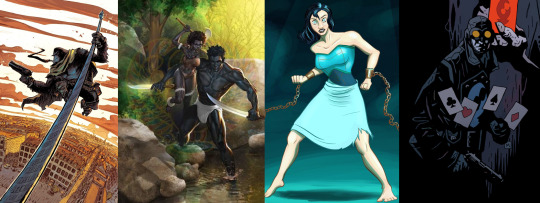
(Pictured left-to-right: Six-Gun Gorilla by Jeff Stokely, Imaro by Mshindo Kuumba, Olga Mesmer by DevinQuigleyArt, and Lobster Johnson by Mike Mignola)
Nowadays, I don’t think it really has that much to do with the character’s proximity to “pulp fiction”, as I once argued in delineating differences between pulp heroes and superheroes. Once you get past the literal fiction printed in wood pulp paper or similarly cheap paper, most of which just doesn’t exist anymore especially outside of America, “pulp” nowadays exists as a term akin to something like “dark academia” and things whose name ends with -core, in that it only functionally exists to point to a “vibe” that broadly overlaps with a lot of other things. Not wholly useless, but not concrete enough either for what we’re looking for.
Is it by proximity to the origin of the “pulp hero” concept as is with superheroes and Superman? Well, in theory, but that implies “pulp hero” is a term with history and definition and tangibility, and it just doesn’t have that in the same way. There is no tangible “first pulp hero” akin to the way we point to Superman as a breakthrough. Closest the term has to an origin is as a bizarro offshoot of “hero pulps”, which is a term coined to describe pulp magazines that were about the exploits of a larger-than-life hero, constitute a really, really small margin of the broader landscape of what pulp fiction comprised and entailed, and it exists largely to describe characters with a specific “vibe” that can invite comparison to said hero pulps. “Hero pulp” defines something that plainly doesn’t exist anymore and is, in itself, dubious as a term to begin with when you bring in other factors like dime novel heroes and feuilleton heroes and etc that all used the exact same format and even printing paper, but it’s a definition still.
What does “pulp hero” define to begin with?
That term defines and groups characters who, for several reasons, fit in that “vibe” one way or another. It groups a lot of characters who didn’t really appear or attain fame in pulp magazines like The Green Hornet, The Spirit and Flash Gordon, but who are still seen as “pulp heroes” because they have that “pulp vibe” to them. That amorphous shadow hanging over them that makes them Of The Past, When The Dinosaurs Pulps Ruled America. Calling a character a “pulp hero” separates it from the superheroes but still implies that they work by similar rules, that they fit under a comprehensive umbrella, that they all belong under the same medium or term or even vibe and they just, didn’t, it didn’t work that way, except it does now.
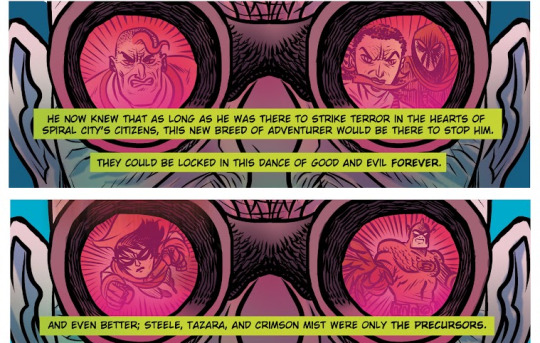
Because Pulp Hero is a term that derives meaning and definition from it’s proximity to The Superhero. By that term which establishes that, characters from an irreconcilably vast range of genres, aesthetics, sensibilities, mediums and contexts can all be remixed together forever and ever and still all fall together under the same definition, so long as you combine the Hero prefix with a signifier and origin they all have in common (Super-/Superman or works defined by Superman and/or superheroes existing).
Superheroes exist and propagate through context, through contact and proximity, viral meme conquerors who’ve entered the 21st century in a mission to obfuscate and destroy and incorporate everything standing in their way through non-stop self-reinvention and transformation, and what happens to some dozens and hundreds of characters whose biggest or only claim to fame nowadays is their proximity to superheroes? Well, the obvious: They become, in a way, superheroes as well.
Within the period where these pulp characters were actually around (which still includes today even), it didn’t make sense to group them together as if they were the same thing or operating in the same spaces when they very, very clearly weren’t. The term didn’t exist because it didn’t have to exist. It would be like grouping every protagonist in Netflix’s film and series catalogue a “Flix Hero” just because they are all film-based, and even that would make more sense considering how many of these countless 1890s-1950s characters aren’t even sharing the same mediums to begin with.
But when those characters all do start to be joined together by virtue of existing in the same space within the cultural imagination, within the same mediums, existing together at all to begin with, in the context through which everyone first discovers them now? Then it makes sense that inevitably, someone would have to coin a name to call them under one thing. To call them as they see it, The Not-Superheroes Of Old. As precursors to the superheroes, as backstory fodder, as characters you’re aware exist and that’s it, as Those of The Past, The Retro Serial Guys, The Granddaddies That Don’t Show Up Anymore, The Only Ones We Still Kinda Remember Existing To Begin With, Runaways and Prisoners Alike From What-Was-Before. It isn’t what I think of, or want, them to be, but it is undeniably what we’ve all been calling them the last years.
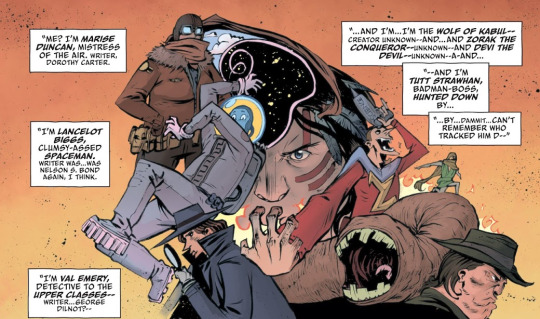
Whether they predate them or not, whether they were made to exist in their worlds or not, that term still defines them first and foremost by their proximity to the superheroes. Only brought together because of ways they are retroactively forced into being seen or becoming more like superheroes, even in the ways they are not. After all, superheroes can be everything, they’ve become everything now. The pulp heroes simply came first as the direct forerunners. Transmutated by proximity to the viral meme, into becoming a part of it.
When superhero universes gesture at them through tribute or parody or both, that’s, in a nutshell, what the superhero genre has done on a larger scale: reach through time and make it so that the pulp characters are now recontextualized into missing links and stepping stones, encubators and trial runs for what would replace everything else as The Biggest Thing Ever. Whether dignified precursors or embarassing prototypes, whether this adds meaning to the pulp heroes or strips it away from them, whether it embellishes or diminishes them, whether this is what saved these characters or doomed them, or all at once, it’s all the same.
To be more conclusive: It’s not that I think all of these characters, pulp characters, were or are superheroes. But it seems that, if we are to assign them as “pulp heroes”, if they are to be seen as feature parts of a tapestry under which they can all exist and be studied and portrayed as “pulp heroes”, that is, in a way, binding them irrevocably to the superheroes that they are defined in opposition of. It is the thought exemplified by what these superhero works do, when they depict analog Shadows and Docs and Tarzans as only nominally-important parts of a superhero universe, usually stripped of most of everything that defined these characters as they were, and not as what they are under the superhero. The end result of these characters having the mark of historical fossils stamped on their foreheads, for better or worse.
I’m not even arguing this as an inherently bad thing for all of them, a lot of the pulp characters actually do stand to benefit a great deal from becoming superheroes, reshaped or influenced by superhero sensibilities. What I am saying though, is that it might have been a lost cause to try to argue so much, as I have, that The Pulp Hero isn’t defined so extensively by their relationship with the past and their current standing as precursors to the superheroes, when the very name we use to call them already comes inextricably bound to both of these things.
We call these characters Pulp Heroes only because there isn’t anything else to call them, but for many, it isn’t, and shouldn’t be, the sum of what they are. In fact, when you do see modern characters who borrow so strongly from those pulp heroes that they would unmistakeably be labeled as such in the past, you see that they only stand to gain from rejecting said label and that pulp/superhero paradigm.

(Pictured: Nam Han-Joon from Café Minamdang, Lunga from Bacurau (2018) and Joker from Persona 5, all of which borrow from and correlate heavily with, respectively: Sherlock Holmes and modernizations of the Great Detective pulp archetype, the Cangaceiro as a popular figure of cordel literature and Brazilian equivalent to the cowboys and gangsters of American folk lore, and Arsene Lupin and the social struggles and rebellion that made him such a game-changer for the Gentleman Thief as a literary icon)
There is a great usefulness to the Pulp Hero label for categorizing, understanding and conveying characters that could not exist outside of that space, who do need to belong under that umbrella and exist neighboring that superhero paradigm. It is very much a case-by-case basis, is what I’m saying. However, it also seems that many of these characters would benefit more from breaking away from that pre-established term and paradigm. Maybe it’s useful to keep in mind that setting out to create a “pulp hero” who purposefully has nothing to do with superheroes is, kind of a losing game when you assign the term “pulp hero” to begin with. A term created by superhero context, created to exist within superhero rules, a separate room within the same house.
It doesn’t have to be a bad thing, but it also doesn’t have to be the only way. That’s the thing about labels in general, they are like boxes. They either fit, or don’t. Boxes can be great, boxes can be really useful, lots of beings really like to be in boxes, everyone wants to find a box that fits you or your things most neatly. But when a box doesn’t fit, or gets imposed onto you by others, or turns into a prison? That’s your cue to leave and go get a new one. I don’t think “pulp hero” is a bad box to put so many of these characters in, but it is a box nonetheless, and one with more limits that I’d previously realized or wanted to admit so, yes, I do think we should find some other ones.

#pulp fiction#pulp heroes#feels weird using that tag but again#what else am I gonna call them#black hammer#six-gun gorilla#this post is kind of why I've never really liked calling The Shadow a pulp hero#or an articulation of why doing that always came with some discomfort#yes it is what he is but#it's frustratingly limited a way to describe him I think#literature#pulp magazines#superheroes
50 notes
·
View notes
Photo

Mshindo Kuumba
593 notes
·
View notes
Photo

Mennun The Immortal by Mshindo I. Kuumba [h/t]
#@mshindoikuumba#mshindoikuumba#mshindo i kuumba#mshindo i. kuumba#mshindo9#nubiamancy#templeofkemet#afrofuturism#afro futurism#att#black art#instagram#mennun the immortal#mennun#immortality
34 notes
·
View notes
Text
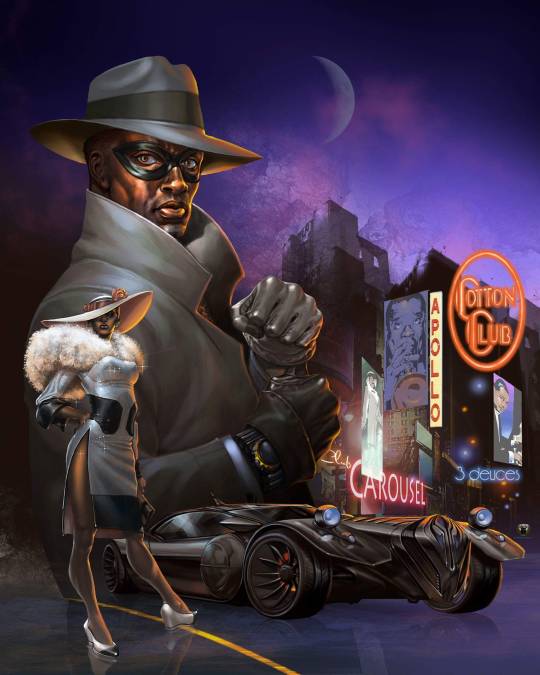
The Harlem Shadow
Art by Mshindo Kuumba
#Comics#Pulp#Harlem Shadow#Pulp Heroes#Art#Pulp Art#Pulp Illustration#Mshindo Kuumba#African-American#Harlem
20 notes
·
View notes
Photo
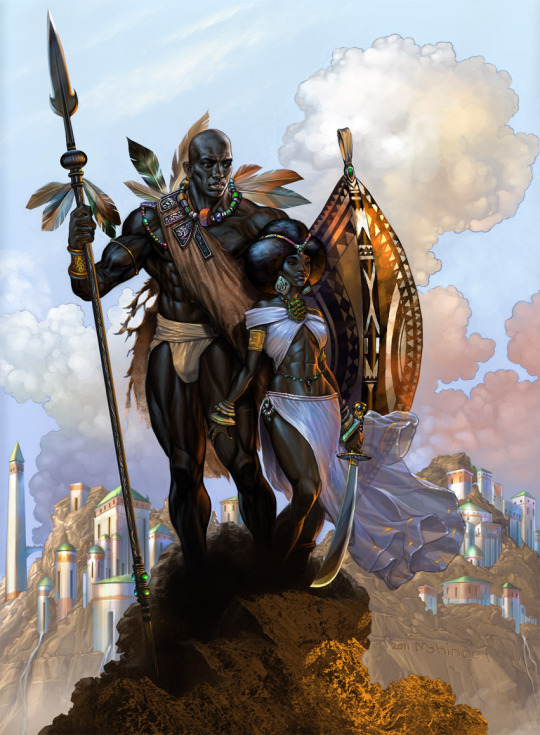
Mshindo I. Kuumba
#Mshindo I. Kuumba#mshindo kuumba#art#modern art#afrofuturism#sketch#illustration#african art#african prints#african society#afroart#afrocentric#african man#african woman
122 notes
·
View notes
Text

BlackOps Progenitus and his herald Onyx.
Mshindo Kuumba
40 notes
·
View notes
Photo

Auset. Manifest
By Mshindo Kuumba
#auset#pelaiahauset#mshindo#digital portrait#goddess#Queen#ancient kemet#kemet#Ancient Egypt#Egypt#divine feminine#culture#Temple of Isis#manifest
93 notes
·
View notes
Text
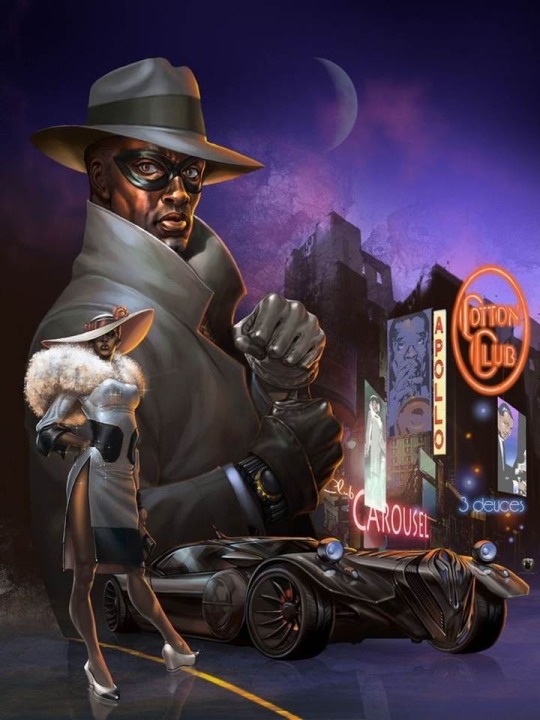
THE HARLEM SHADOW
Art by MSHINDO I. KUUMBA
36 notes
·
View notes
Photo
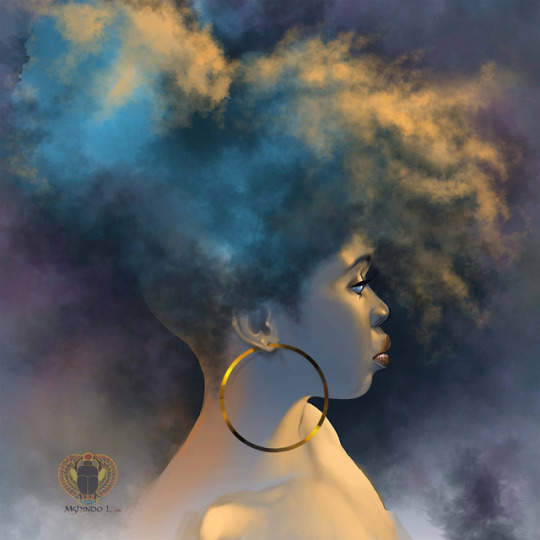
Artwork by Mshindo Kuumba
606 notes
·
View notes
Text
4 notes
·
View notes
